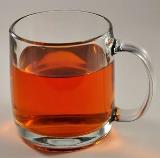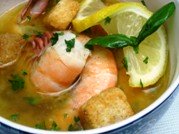|
Straight talk about good sources of protein can be found here at Eagle Wood Farms.
1. Good Sources of Protein - What is Protein? Etymologists generally believe the word is of Greek origin, "proteious", meaning "of first quality". Coined by scientists during the 1800's, it was considered a theoretical substance responsible for life. Built from smaller molecules called amino acids proteins are responsible for the majority of chemical reactions in our bodies, including the building, maintenance and repair of body tissue, hormones and our immune systems. Amino acids, which contain carbon, oxygen, hydrogen, nitrogen and sulfur, perform different bodily functions as proteins. A protein's amino acid structure and sequence determines its function. 2. Good Sources of Protein - Why humans need protein In a brief, though not complete summary, proteins are responsible for: Chemical Reactions Proteins control our metabolism (energy consumption) in the form of enzymes or catalysts. Catalysts accelerate chemical reactions. The sum of all chemical reactions in our body can be loosely called our metabolism. Enzymes are involved in accelerating about 4,000 chemical reactions in our bodies. Some increase the rate of reaction over 1,000 times as compared to the same reaction without an enzyme. The names of enzymes usually have the suffix -ase. Chemical Communication Hormones, such as insulin, are chemical messengers. They allow cells in one area of the body to communicate with distant cells in another area of the body through the blood stream. Hormones affect:
Chemical Transportation Hemoglobin in the blood and myoglobin in muscle carry oxygen from the lungs to cells throughout the body. Oxygen is needed to convert our food energy (glucose) into an energy form cells need to perform their specific functions. Lipoproteins participate in the transportation of fat and cholesterol. All chemical reactions require energy. Structural Components Proteins such as collagen and keratin are components of connective tissue like cartilage, ligaments, tendons, hair and nails. Immune System Proteins like antibodies attach to viruses, bacteria, or other foreign bodies, inactivating them and making them more visible to the body's immune system. This is vital so the body will not attack itself but only the invader. This process is called acquired immunity. Physical Movement Motor proteins convert chemical energy into mechanical energy. Actin and myosin are responsible for muscular motion. Receptors / Transmitters These proteins are responsible for signal detection and translation into other types of signals. A very well known protein is called id rhodopsin - the light detecting protein. Fluid / Ph balance Proteins participate in the maintenance of osmotic pressure, which controls the amount of water that is found inside of cells. With their ability to combine with both acidic and basic substances, proteins help to maintain the normal acid-base balance in the body. 3. Good Sources of Protein - Essential and Non-essential Amino Acids In general, essential amino acids are those that the human body cannot synthesize and therefore must be consumed from good sources of protein. The eight essential amino acids are isoleucine, leucine, lysine, methionine, phenylalanine, threonine, tryptophan, and valine. Nonessential amino acids are those that the body can manufacture on its own from a proper diet of fats, carbohydrates and good food sources of protein. The nonessential amino acids include glutamate, alanine, aspartate, glutamine, arginine, proline, serine, tyrosine, cysteine, taurine, and glycine. With histidine it appears the body can and cannot produce it during certain periods of development. Typically infants must be fed good sources of protein to obtain histidine. 4. Good Sources of Protein - Food and Supplements It is important to understand how values for Nutrients have been determined by the US Food and Drug Administration. The unit of measure is called Daily Reference Value (DRV). DRVs for the energy-producing nutrients (fat, carbohydrate, protein, and fiber) are based on the number of calories consumed per day. For labeling purposes, 2,000 calories has been established as the reference for calculating percent Daily Values with:
**DRV for protein does not apply to certain populations; Reference Daily Intake (RDI) for protein has been established for these groups: children 1 to 4 years: 16 g; infants under 1 year: 14 g; pregnant women: 60 g; nursing mothers: 65 g. U.S. Food and Drug Administration's Reference Values for Nutrition Labeling Good sources of protein include, but are not limited to, the following:
Consuming good sources of protein, both pure and natural, is vital to your health. Contact Eagle Wood Farms Return from Good Sources of Protein to Eagle Wood Home Page |



